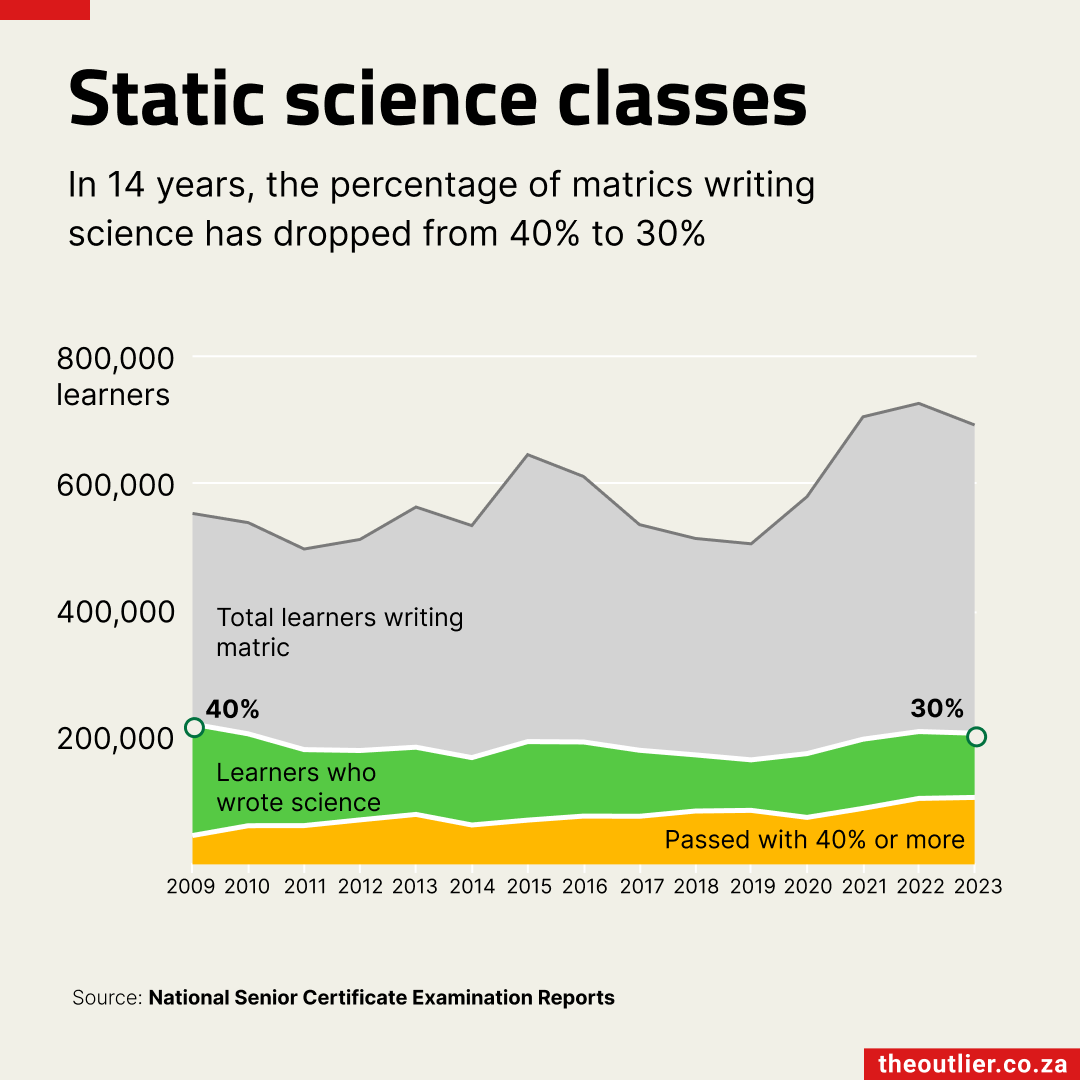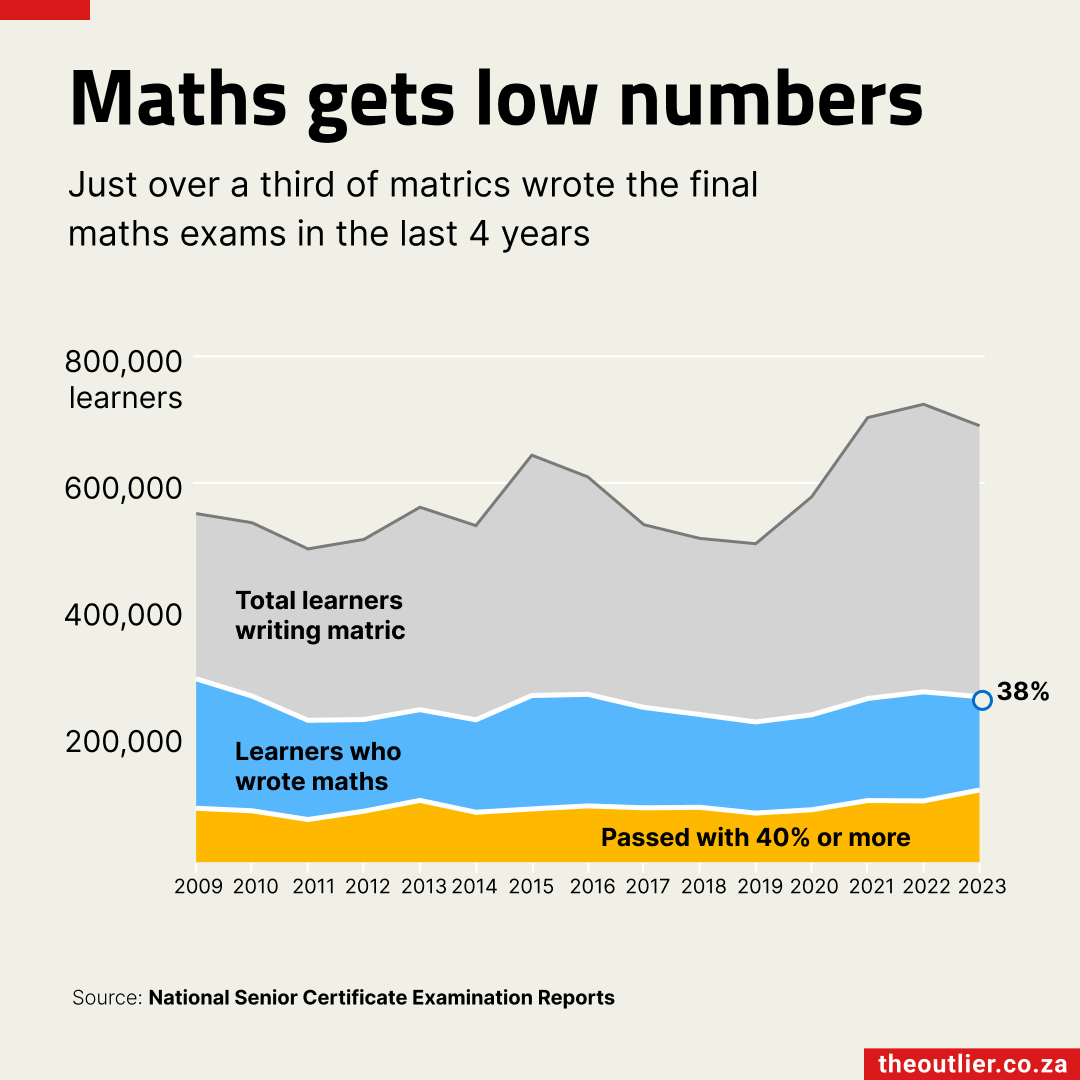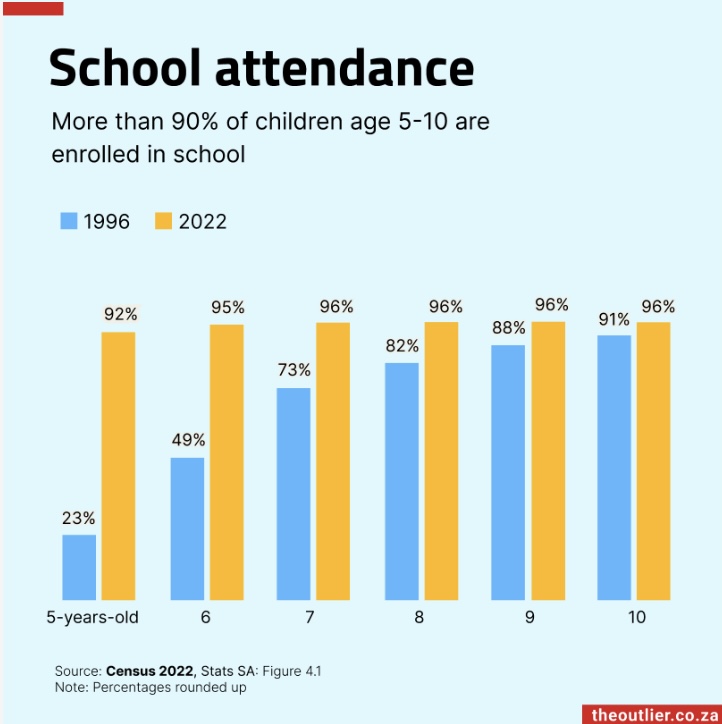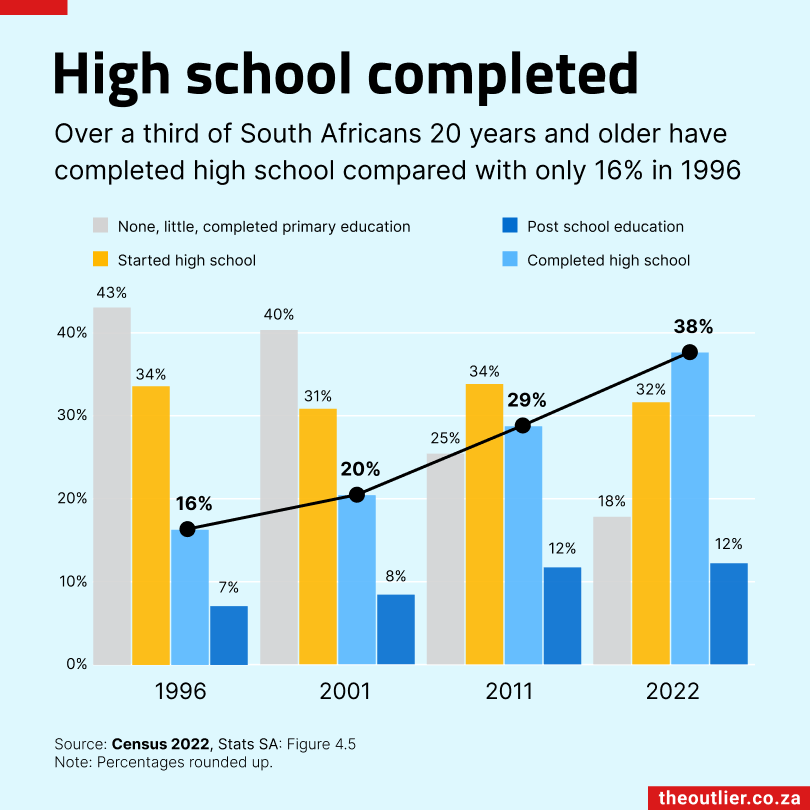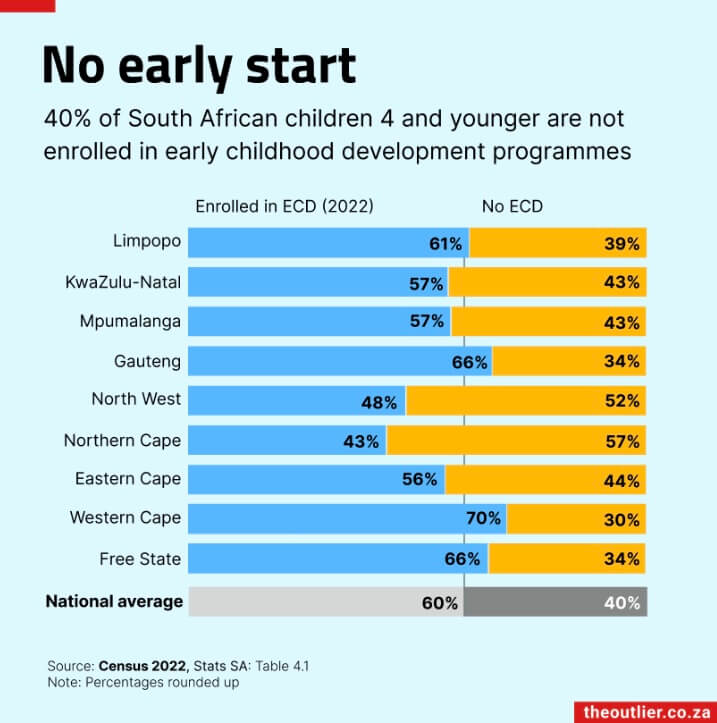No-fee schools are at a real disadvantage when it comes to maths
This year’s matric results show that half of the the grade 12s in no-fee schools failed maths
Image: DALL·E/OpenAI
Learners from fee-paying and independent schools are far more likely to pass maths than learners in no-fee schools, this year’s National Senior Certificate results show.
Of the roughly 27,000 Grade 12s who wrote their final maths exams in 2022, 121,388 – a staggering 45% – failed the subject. This seems to be the norm. In 2021, 42% failed maths and the year before that 46% failed.
The numbers mask a glaring disparity between learners who attend no-fee schools, which tend to be in poorer and rural areas, and those who attend fee-paying and independent schools, which tend to be in wealthier areas.
Just over two-thirds of the matrics who wrote the maths exams this year were at no-fee schools and half of them (49%) passed.
Compare that with the 68% of learners at fee-paying schools and 72% of learners at independent schools who passed.

In South Africa, a mark of 30% is considered a pass. The data from the department of education shows that many matrics are just scraping by with a pass. Just over one in every 10 learners (13%) achieved a final mark of 60% and above for maths.
Mathematics is a gateway subject and without it, learners do not qualify for most of the science, technology, engineering and mathematics (STEM) degrees that are needed for the jobs that will drive the country’s development.
“When it comes to maths, 30% is of no use for entering fields that rely on maths conceptual understanding… Those who want to pursue careers that relate to science and maths must get a much higher mark, probably at least 70% to 75% for these subjects,” says Dr Anthea Cereseto, CEO of the Governing Body Foundation, which promotes governance in public schools.
Taking some form of mathematics at school is compulsory. Most South African learners (62%) opt for mathematical literacy, which takes a more practical approach, but is not accepted for most STEM degrees.
Similar disparities can be seen in the proportion of bachelor’s passes achieved this year at no-fee schools. A bachelor’s degree pass is the highest matric pass attainable and it’s a requirement to get into university.

Only 34% of learners in no-fee schools achieved this pass, whereas 59% of learners in independent schools and 47% of learners in fee-paying schools achieved bachelor’s passes.

